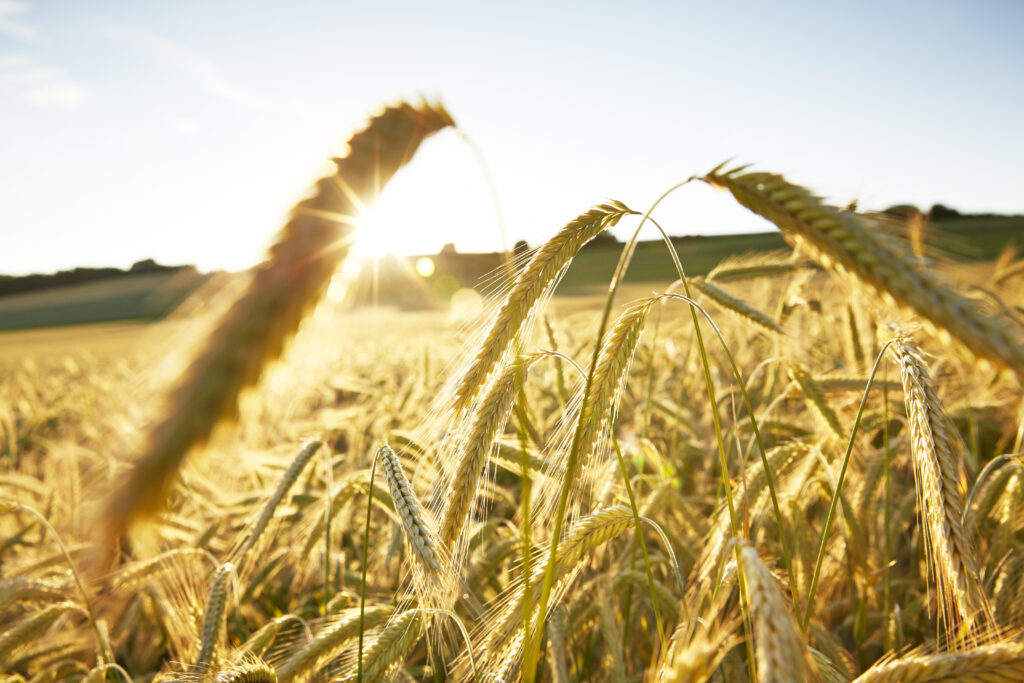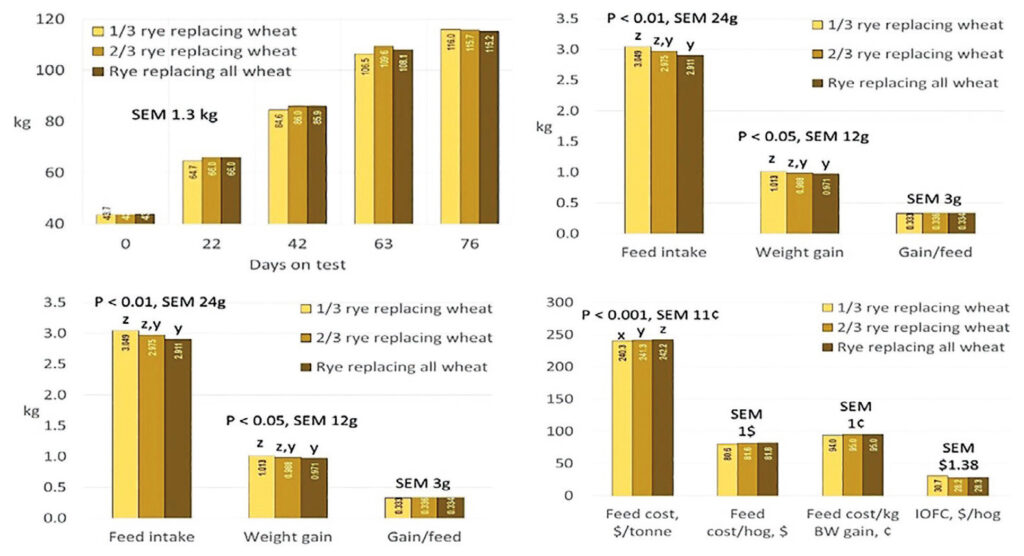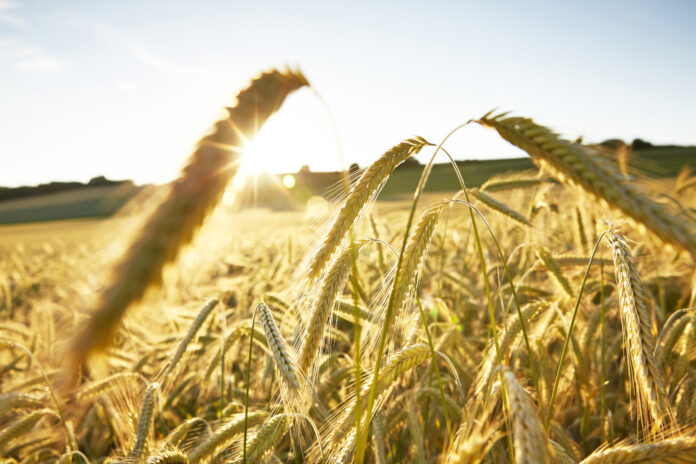By Jeff Melchior

Tell some pork producers they should include rye in their pigs’ diet, and you may get some strange looks. They might point out that pigs do not like it and – perhaps more importantly – that it contains high amounts of ergot, a fungal disease that reduces milk production in lactating sows.
Those are legitimate concerns if you are talking about traditional, open-pollinated rye. But over the past several years, developers have been working to tackle the weaknesses of rye as a feed source. The result has been fall hybrid rye, a crop that breeders and researchers have identified as a competitive – but ultimately complementary – feedstuff for swine.
When used as directed, marketers claim pigs get a low-ergot feed they find palatable, filling and even calming. Proponents also tout its high amount of fibre – a trait inherited from its conventional counterpart.
On the cost front, research is showing that hybrid fall rye can offer producers a cheaper (or at least comparatively priced) feedstuff that is virtually equivalent to wheat and barley in terms of key performance metrics such as dry matter intake, average daily gain, feed efficiency, body weight and carcass quality.
Since 2014, Saskatchewan-based FP Genetics – a certified seed company owned by seed growers across the Prairies – has been heavily involved in the marketing and distribution of hybrid fall rye, thanks to the company’s relationship with Germany-based seed breeding company KWS, which has made the improvement of the crop a wide-ranging goal. The company’s specific breeding goals include higher yields and ergot defence, followed by better disease resistance and minimized lodging.
“There is little doubt that reduced ergot content has played a role in the success of our lineup of hybrid fall rye varieties to date,” said Herman Wehrle, Director of Commercialization, FP Genetics. “The new products that are coming online have significantly improved ergot defence. Even in the few years we’ve been in commercial production here in Canada, over that time, we’ve improved ergot defence by well over 50 per cent.”
Pollen aids in ergot resistance
In the case of the KWS/FP Genetics system, ergot resistance has been achieved by increasing pollen shedding in the growing process. Essentially, it involves high amounts of pollen-blocking ergot from entering the plant.
“The pollen goes into the ears, so then the ear will be closed, and no fungi can go inside,” said Claus-Hinrich Heuer, Product Manager, KWS. “When we started these breeding programs more than 15 years ago, we had some problems with ergot. We found out that we had to cross a special gene called ‘Rfp1’ in our plants. Due to this crossing, we could increase the pollen shedding significantly.”
Further enabling pollen shedding is one of KWS’s key goals in the fight against ergot: “It’s important to use much more pollen from the breeding side. We want to identify minora – or smaller – genes, which are responsible for the pollen shedding of our hybrids. And there are other breeding aspects where we are seeing improvement on pollen shedding so we reduce the risk of ergot in the plants,” Heuer added.
Feed mixing rates: an ongoing discussion

A big concern is whether or not pigs will eat hybrid rye. Even if this was an issue with conventional rye, it does not appear to be one that has carried over to the hybrid varieties.
“In the past, people thought that, when you feed too much rye, they don’t eat it, and it reduces the feed intake, but this is not the case,” said Heuer. “We have done a lot of trials with pigs at different ages, and there’s no difference in palatability between hybrid fall rye and wheat. The feed uptake is normal.”
So if hybrid fall rye is safe for hogs, keeps them productive, and they like it, how much should you feed them? The amount of hybrid fall rye to mix into feed rations has been an ongoing discussion among producers and researchers for years.
This year, Molly Lee McGhee – in her doctoral dissertation at the University of Illinois – measured the extent to which hybrid rye could replace corn in pig feed rations without compromising average daily gain.
She concluded that hybrid rye is a suitable feed ingredient for pigs at all physiological stages, with the bottom line being that it may replace a majority of corn in diets for growing and reproducing pigs without negatively affecting gain. Of note was her discovery that up to 75 per cent of corn may be replaced with hybrid rye in gestating and lactating sow diets without hindering sow or litter performance, with diets replacing 25 to 50 per cent of corn, actually improving lactation performance.
FP Genetics errs on the side of caution in its feeding guidelines, with recommended dietary inclusions ranging from 10 per cent for piglets weighing less than 15 kilograms to 50 per cent for gestating sows and feeders weighing 60 kilograms or more. This graduated rate of inclusion accounts for extra energy needed along the pig’s life cycle and stages of stomach development.
“As the pigs get bigger and the stomach gets more developed, we suggest more and more rye input,” said Wehrle. “Once the stomach is fully developed, we’re saying you can replace 50 per cent of feed with hybrid rye, and you will not ever see any issue with respect to average daily gain, feed intake or any of those key metrics a swine producer has to look for.”
An exception is lactating sows, which carry a 25 per cent inclusion recommendation: “The reason for that is because they need a ton of energy at that time, and even though they have a well-developed stomach, we realize energy at that point is very, very important, so we drop the inclusion versus gestating sows, which are at 50 per cent inclusion,” Wehrle added.
Better bang for your buck but less availability
Due to limited availability in Canada, including hybrid rye at an appropriate rate can pose a challenge. Although rye acreage – largely consisting of hybrid varieties – has been increasing on the Prairies (Statistics Canada pegs 2019 seedings at 352,000 acres, compared to 225,000 in 2016), it is a drop in the bucket compared to wheat and barley.
“Quite frankly, if we got 10 per cent of the hog market in Canada, we would have to be growing many millions of acres of hybrid rye. We’re not even close to it,” said Heuer. “Producers would use more rye in the diet if they could get enough material. So, they’re more likely putting 10 to 20 per cent in the diet.”
Crop farmers who get their hands on the seed, however, are, for the most part, in for a bargain. Fall hybrid rye varieties generally produce 20 to 30 per cent more than conventional rye, producing a lower cost per tonne. These savings are typically passed on to pork producers.
“We’ve been able to lower the cost per acre of feed, because we get more tonnes per acre, and to a feed buyer, that’s going to mean he’s going to have access to a product that is a lower cost to produce on a metric tonne basis,” said Wehlre. “In the feed business, 70 per cent of the cost of hog production is feed, so if we can reduce the cost of feed, that’s a pretty positive thing.”
Hybrid rye helps pigs relax

From a health perspective, hybrid rye’s high amount of dietary fibre features a range of benefits. The fibres present in the rye lengthen digestion and reduce insulin spikes, stimulating additional fatty acids like butyrate that benefit gut health and even have an effect on farrowing, such as fewer crushed piglets, more piglets weaned, reduced piglet mortality and heavier litters.
A soon-to-be-published study conducted by KWS with the University of Hanover in Germany has found that this dietary fibre has a positive effect on the overall calmness of the herd. The preliminary data shows a reduction in running, biting and overall undesirable behaviour.
“We see a significant difference,” said Heuer. “This is especially important in group housing, where pigs are always coming and going with fights taking place.”
Considering adding hybrid rye to your rations? You might be pleasantly surprised at what is possible!





